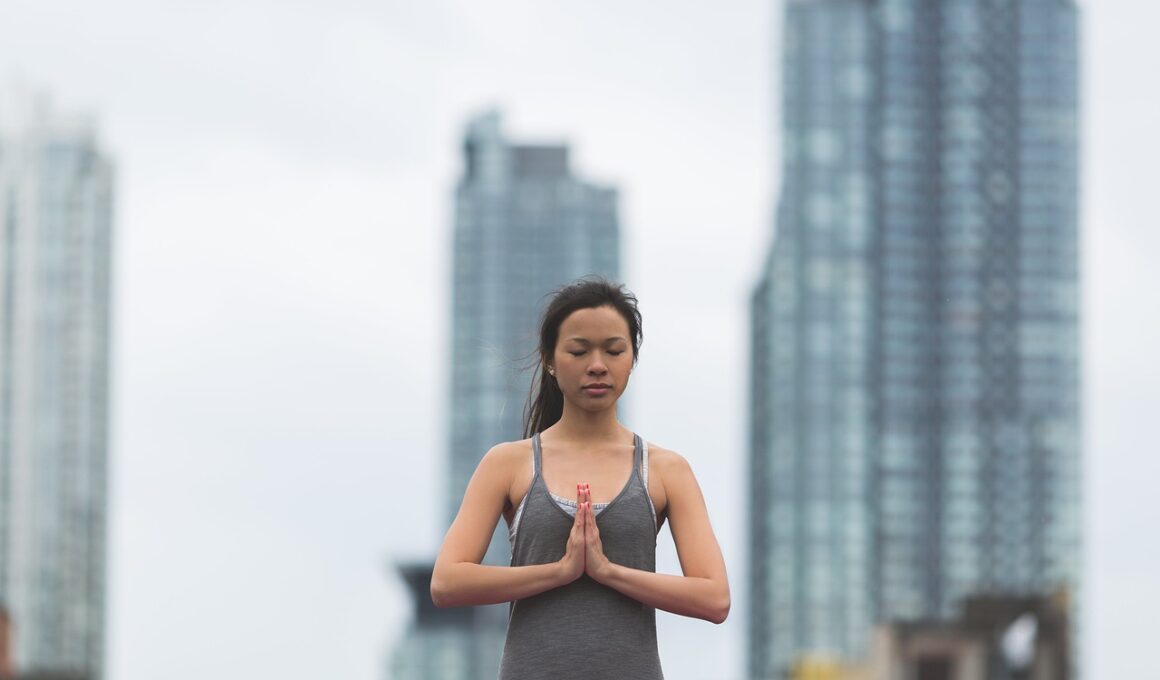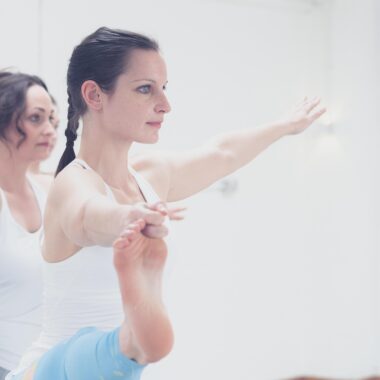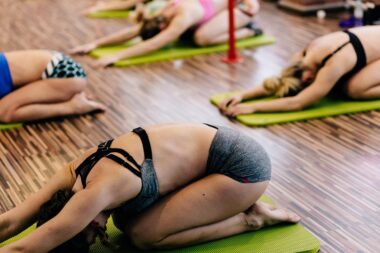Stretching for Seniors: Maintaining Functional Fitness and Flexibility
Maintaining functional fitness is essential for seniors, especially as they encounter physical changes with age. One effective way to enhance flexibility is through consistent stretching exercises tailored to older adults. These exercises can greatly impact overall mobility, balance, and reduce the risk of falls, leading to a more independent lifestyle. Stretching plays a crucial role in maintaining the range of motion in joints, which is vital for everyday activities such as bending, reaching, and walking. Incorporating these exercises into a daily routine doesn’t have to be complicated; simple stretches can be done at home or in classes designed for seniors. It’s essential for older adults to begin slowly and seek guidance if needed, ensuring that they perform exercises safely and effectively. Regular stretching aids in improving circulation, reducing stiffness, and alleviating tension in muscles. By dedicating time to flexibility exercises, seniors can enhance their overall health and well-being. Stretching not only promotes physical advantages but also contributes positively to mental health, providing a sense of accomplishment and a boost in self-esteem.
One of the primary benefits of stretching for seniors is its role in enhancing balance and coordination. The need for better balance becomes increasingly important as individuals age, as it can significantly reduce the likelihood of accidental falls. Many stretching exercises target muscle groups that contribute to maintaining stability, such as the core and leg muscles. Engaging in flexibility exercises helps seniors build strength in these areas, leading to improved stability and better control over their movements. Another important reason to incorporate stretching into a routine is its ability to reduce discomfort associated with stiff joints and muscles. Many older adults suffer from issues like arthritis or general stiffness, which can seriously hinder their daily activities. Gentle stretching can alleviate pain and help individuals perform movements with greater ease. Consider various stretching routines that emphasize different body parts, ensuring a comprehensive approach to flexibility. Programs can include seated stretches, standing stretches, or even yoga, all catering to different mobility levels. Finding the right stretches can be a game-changer, providing noticeable improvements in comfort and well-being.
Key Stretching Techniques for Seniors
When it comes to stretching exercises for seniors, specific techniques are particularly beneficial. One effective stretch is the seated hamstring stretch, which helps to elongate the muscles in the back of the thigh. To perform the stretch, sit on the edge of a sturdy chair, extend one leg straight out, and gently lean forward to feel a stretch in the back of the thigh. Hold this position for 15-30 seconds and switch legs. Another excellent technique is the shoulder stretch, promoting flexibility in the upper body. Stand or sit, then extend one arm across the body, using the opposite hand to gently push it closer to the chest. This can reduce tension in the shoulders, which can become stiff with age. Additionally, consider incorporating side bends for spine flexibility. Stand with feet shoulder-width apart and reach one arm overhead; gently lean to the opposite side while keeping the hips stable. Remember to breathe deeply as you stretch to enhance the effectiveness. Always listen to your body and avoid overextending, especially when trying new stretches or exercises.
It’s crucial for seniors to prioritize safety while engaging in stretching exercises. Before starting any activity, they should consult with a healthcare provider or a fitness professional. Tailoring stretches to individual abilities and limitations is an important aspect of maintaining safety. Finding the right balance between challenge and comfort can enhance the exercise experience. To further ensure safety, seniors should focus on using sturdy furniture or equipment for support during stretches. Utilizing a chair or wall for balance during standing stretches can prevent accidental falls or injuries. Additionally, wearing comfortable clothing and shoes is essential for unrestricted movement. Hydration serves as another vital component; maintaining proper fluid intake can improve muscle function and recovery during exercises. Holding stretches gently, rather than pushing through discomfort, should be the norm, allowing for gradual improvement over time. Seniors should aim for consistency, dedicating time frequently to their stretching routines to achieve lasting results. Integrating stretching into daily life can lead to increased adherence and create a beneficial habit that enhances flexibility, mobility, and overall health.
Creating a Flexibility Routine
To establish a successful stretching routine, seniors should consider several key factors including duration and frequency. Aim for a minimum of two to three sessions per week, each lasting around 20 to 30 minutes. A well-structured session should include a warm-up, followed by targeted stretches, and concluding with a cool-down. Warming up the muscles through light activity such as walking or marching in place prepares the body for stretching. Post-stretching, gentle movements such as walking can help to relax the muscles. It’s beneficial to focus on areas commonly tight for seniors: hips, shoulders, and legs. Including a variety of different stretches and switching them regularly keeps the routine engaging and helps target various muscle groups effectively. To help track progress, seniors may consider keeping a journal that logs the stretches performed along with any improvements in flexibility. This awareness can serve as motivation and affirm the benefits of their efforts. Creating a holistic flexibility routine can markedly improve an individual’s functional fitness and enhance their quality of life over time.
Incorporating social aspects into a stretching routine can also enhance engagement and enjoyment. Encouraging participation in group activities can lead to building friendships and support networks, which is often valuable for seniors. Classes specifically designed for older adults often provide great opportunities to learn and practice together with others facing similar challenges. Look for a local community center or gym offering classes tailored to seniors. Online resources and videos can provide further options for flexibility exercises, allowing seniors to choose whichever suits their schedule. Engaging in stretching with family members or friends can be a delightful way to connect and motivate one another. It encourages accountability and reinforces a commitment to maintaining health. Many find joy in sharing their progress with loved ones, which can create a sense of pride and accomplishment. Remember that consistency and a positive mindset play crucial roles in personal fitness journeys. By blending social interactions with fitness routines, seniors can elevate their experience, ensuring they continue to prioritize not only their flexibility but overall well-being as they age.
Conclusion and Encouragement
To wrap up, stretching is a vital component that supports the quest for functional fitness among seniors. Regular stretching not only enhances flexibility but also plays a significant role in preventing injuries and improving overall well-being. It’s essential for seniors to understand that every small improvement counts; there’s no pressure to achieve perfection. Everyone progresses differently, and the key is to listen to one’s own body and strive for incremental growth. Seniors should also celebrate their efforts, no matter how small they may seem, acknowledging the courage it takes to embrace an active lifestyle. As they embark on this journey towards better flexibility and fitness, finding encouragement from peers and fitness experts can be beneficial. Always seek proper guidance on performing stretches correctly and safely. By committing to their stretching routines, seniors can maintain a sense of independence, continue to enjoy activities they love, and feel more confident in their daily movements. Ultimately, a commitment to stretching contributes to a healthier, happier life in the later years, fostering a sense of vitality and joy.
In summary, flexibility exercises are essential for older adults who prioritize their functional fitness. The numerous benefits they provide, from improved mobility to enhanced safety against falls, cannot be overstated. Seniors are encouraged to find stretches that resonate with them while ensuring they are performed safely and effectively. Adaptability is key; listen to your body and adjust your routine as needed, prioritizing comfort and ease of movement. Engaging in regular flexibility exercises ultimately enriches the quality of life. Over time, the changes in flexibility and mobility can be quite remarkable, reinforcing the importance of dedication to this crucial aspect of fitness. Whether joining a class or practicing independently at home, seniors have various options that can fit into their lifestyles. The sky’s the limit regarding creativity and fun; the aim is to keep the experience enjoyable and fulfilling. As this article outlines, stretching is not just a means to an end but an empowering process that promotes health, confidence, and a greater sense of control over one’s body. Let’s encourage seniors to take the steps necessary to incorporate flexibility exercises into their daily routines.





